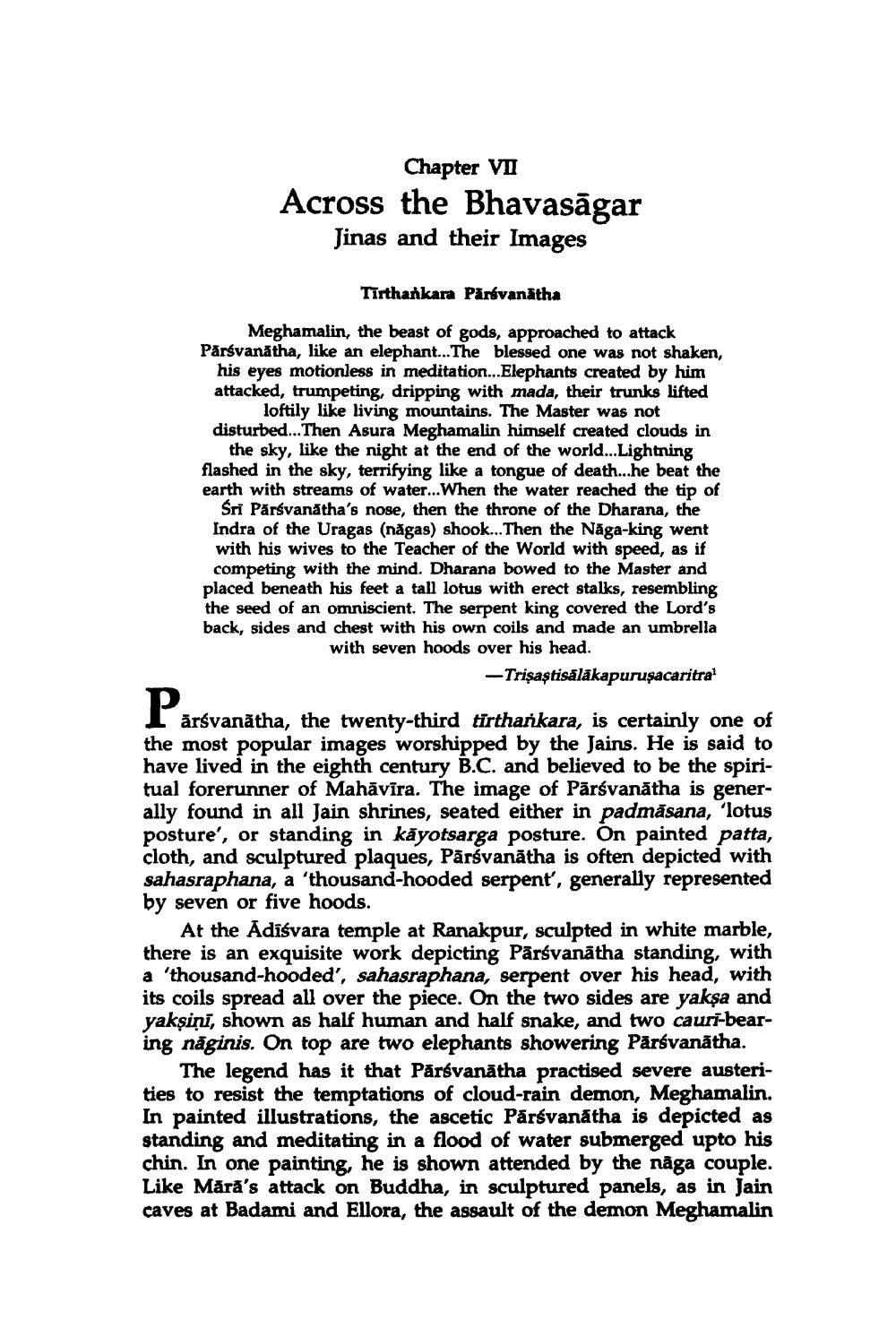________________
Chapter VII Across the Bhavasāgar
Jinas and their Images
Tirthankara Parsvanatha
Meghamalin, the beast of gods, approached to attack Pārsvanātha, like an elephant...The blessed one was not shaken,
his eyes motionless in meditation...Elephants created by him attacked, trumpeting, dripping with mada, their trunks lifted
loftily like living mountains. The Master was not disturbed... Then Asura Meghamalin himself created clouds in
the sky, like the night at the end of the world... Lightning flashed in the sky, terrifying like a tongue of death...he beat the earth with streams of water... When the water reached the tip of
Sri Pārsvanatha's nose, then the throne of the Dharana, the Indra of the Uragas (năgas) shook... Then the Nāga-king went with his wives to the Teacher of the World with speed, as if competing with the mind. Dharana bowed to the Master and placed beneath his feet a tall lotus with erect stalks, resembling the seed of an omniscient. The serpent king covered the Lord's back, sides and chest with his own coils and made an umbrella with seven hoods over his head.
-Trişastisálākapuruşacaritral
Lärsvanātha, the twenty-third tirtharkara, is certainly one of the most popular images worshipped by the Jains. He is said to have lived in the eighth century B.C. and believed to be the spiritual forerunner of Mahāvīra. The image of Pārsvanātha is generally found in all Jain shrines, seated either in padmāsana, 'lotus posture', or standing in kāyotsarga posture. On painted patta, cloth, and sculptured plaques, Pārsvanātha is often depicted with sahasraphana, a 'thousand-hooded serpent', generally represented by seven or five hoods.
At the Adīśvara temple at Ranakpur, sculpted in white marble, there is an exquisite work depicting Pārsvanātha standing, with a 'thousand-hooded', sahasraphana, serpent over his head, with its coils spread all over the piece. On the two sides are yakşa and yakşini, shown as half human and half snake, and two cauri-bearing näginis. On top are two elephants showering Pārsvanātha.
The legend has it that Pārsvanātha practised severe austerities to resist the temptations of cloud-rain demon, Meghamalin. In painted illustrations, the ascetic Parsvanatha is depicted as standing and meditating in a flood of water submerged upto his chin. In one painting, he is shown attended by the någa couple. Like Mără's attack on Buddha, in sculptured panels, as in Jain caves at Badami and Ellora, the assault of the demon Meghamalin




